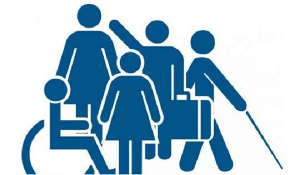Disability, according to Mark Haddon, is a means of getting some extremity or some kind of very challenging situation that throws an interesting light on people. It is one of the most significant issues in the contemporary society because stigmatization of persons with disabilities contributed to the formation of biases and preconceptions which put them into a detrimental position compared to people who did not have problems of disability. Rightly stated by Martina Navratilova, disability is a matter of perception and if a person with disability can do something well, then he’s obviously needed by someone.
International Day of Persons with Disabilities (IDPWD), is celebrated on December 3rd every year since its inception in 1992 when it was mandated by the United Nations. This year’s theme focuses on creating and spreading awareness on disability inclusion as well as disabilities that are not directly apparent such as cognitive dysfunctions, neurological disorders and mental illness amongst others. Inadequate visibility and recognition of some forms of disabilities make it very easy to forget about this imperative group.
Disability inclusion is an essential condition to upholding human rights, sustainable development and peace and security. The commitment to realizing the rights of persons with disabilities is not only a matter of justice; it is an investment in a common future. A world account on disability by the WHO shows that, 15 percent of the world’s populace live with some form of disability and of this number, it’s projected that 450 million are living with a mental or neurological condition and two thirds of such persons do not seek proficient medical help largely due to stigma, discrimination and neglect. As a society, when we think of disabled, we instantaneously think of disabilities that we can see. However, it becomes detrimental when people simply begin correlating disabilities with what they see and jumping to conclusions because, in reality, there are limitless disabilities which may not be seen with the naked eye. Statistics show that, for every person you see with a visible impairment, you’ve more than likely seen four more who are disabled but don’t look it. Many people face mental disorders and illnesses that are not noticeable and their condition shouldn’t be taken any less seriously than those with visible symptoms. It’s surprising how abled people often say innocuously obnoxious things like “but you don’t look disabled”. Even though these disabilities create a challenge for the people who have them, the reality is that, it can be difficult for others to recognize or acknowledge that it exists.
The global crisis of COVID-19 is deepening preexisting inequalities, exposing the extent of exclusion and highlighting that work on disability inclusion is highly imperative. People with disabilities are one of the most excluded groups in our society and are among the hardest hit in this crises in terms of fatalities. As COVID 19 continues to have wide reaching impacts across the globe, it is important to note how persons with disabilities are uniquely impacted by the pandemic, including health, education and transport considerations. In the area of health, many persons with disabilities have additional underlying health needs that make them particularly vulnerable to severe symptoms of COVID-19 if they contract it and they may also be at increased risk of contracting COVID-19 because information about the disease, including the symptoms and prevention are not provided in accessible formats such as print materials in braille, sign language interpretation and audio provisions amongst others.
On the global level, there is growing momentum around improving educational inclusion and employment participation for persons with disabilities in today’s academic institutions and labor force, especially with the invention of assistive technology in which there is an increasing number of open opportunities and a significant need for new talent pools.
The ultimate objective of the United Nations Convention on the Rights of Persons with Disabilities, the 1992 Constitution of the Republic of Ghana and the Persons with Disabilities Act 2006, Act 715 is that every person with a disability is recognized as an equal citizen in the country with full rights on an equal basis with others, with dignity, respect and freedom. In view of this, national policies and legal systems must be strengthened to ensure that all persons with disabilities have equal rights to access quality education and economic empowerment. Also, a professional education workforce must be developed, trained and supported to respond to the requirements of inclusive education, such as diverse learning styles. Again, accessible, alternative and additional learning and teaching materials should be provided to make the curriculum more inclusive in content and the barriers to inclusion, I believe can be reduced by ensuring a multi-sectoral approach from birth through to secondary, technical and vocational training and higher education and various workplaces.
Global awareness of disability-inclusive development is increasing and as an advocate, I believe disability inclusion will result in a COVID 19 response and recovery that better serves everyone, more fully suppressing the virus as well as building back better.

